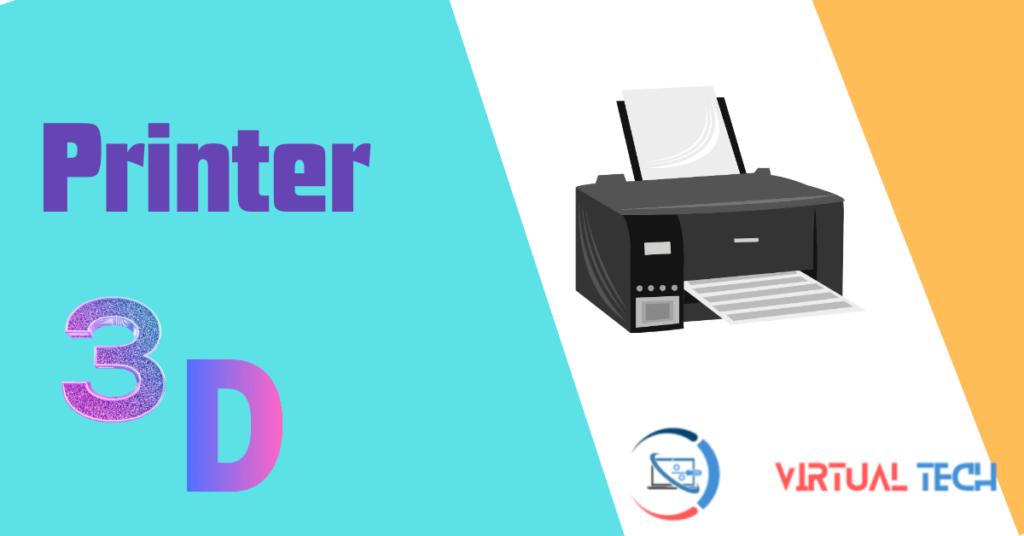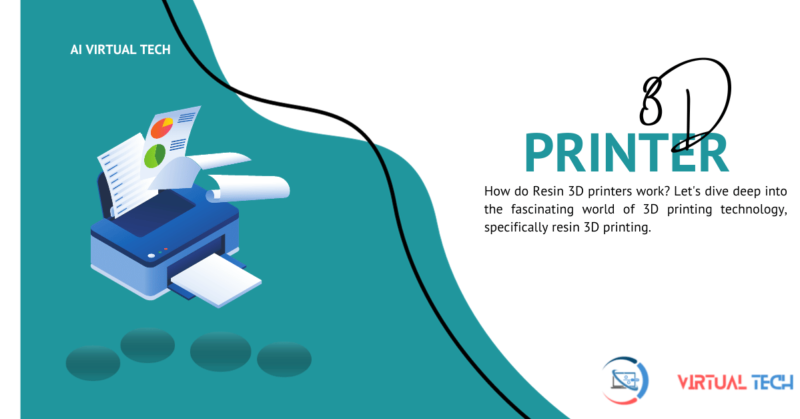How do Resin 3D printers work? Let’s dive deep into the fascinating world of 3D printing technology, specifically resin 3D printing. In this exploration, we’ll uncover the intricate functionality, wide-ranging applications, and the potential impact it holds for various industries.
Basics of Resin 3D Printing
- Resin 3D printing is a popular form of additive manufacturing that uses liquid resin as its primary material.
- This revolutionary technology operates based on a process known as photopolymerization, where light sources cure the liquid resin layer by layer to form the final product.
- In resin 3D printing, a digital model acts as the blueprint. The printer, guided by this model, selectively exposes the resin to a light source, typically a UV laser or projector. The exposure hardens the resin, solidifying it into a particular shape.
- Unlike other forms of 3D printing, resin 3D printing provides a high level of detail, making it ideal for intricate designs.
- This precision makes resin 3D printers a top choice for industries such as dentistry, jewelry, and product design, where attention to detail is paramount.
The Process: Photopolymerization Explained
Photopolymerization is the core process in resin 3D printing. It involves using light to change a liquid into a solid, a process that occurs at the molecular level.
When the resin comes into contact with the light, it triggers a chemical reaction, initiating the hardening process.
This process happens layer by layer, with each layer adhering to the previous one. This sequential building contributes to the high precision that resin 3D printers can achieve.
Therefore, understanding the variety of resins available and their properties can significantly influence the outcome of the printing process.
Different Types of Resin
Resins used in 3D printing vary widely, each with its unique properties and applications. It provides a balance between strength and detail, making it suitable for a range of applications.
Next, we have tough resin, which has higher strength and durability, perfect for functional parts and prototypes.
There’s flexible resin. As the name suggests, this type offers a flexibility that mimics rubber-like properties.
Ideal for parts that need to bend or compress, flexible resins are a popular choice for products like seals, gaskets, and cushioning components.
Applications of Resin 3D Printing
- Resin 3D printing has found applications in a plethora of fields. In the medical sector, it’s used to create detailed anatomical models for surgical planning and patient education.
- Similarly, in dentistry, it’s used to manufacture precise dental crowns, bridges, and orthodontic models.
- In the world of art and design, resin 3D printing allows artists and designers to bring their intricate designs to life with an unprecedented level of detail.
- This technology also has significant implications for the jewelry industry, where it has revolutionized the process of creating complex, detailed pieces.
- Resin 3D printing has made its mark in manufacturing, where it’s used to create prototypes and end-use parts.
- The flexibility, precision, and variety of materials available make it an excellent tool for this industry.
Resin 3D Printing vs. Other Techniques
When compared to other 3D printing techniques, such as Fused Deposition Modeling (FDM) or Selective Laser Sintering (SLS), resin 3D printing stands out in several ways. Firstly, it offers superior resolution and detail, making it well-suited to jobs that require a high level of precision.
However, resin 3D printers are generally slower and have a smaller build volume than FDM and SLS printers.
They also require more post-processing, including washing and curing the print. These factors can make resin 3D printing less suitable for large-scale or rapid production.
Despite these limitations, the unique advantages offered by resin 3D printing, such as high precision and versatility in material selection, make it a valuable addition to the broad spectrum of 3D printing technologies.

Future of Resin 3D Printing
Given its numerous advantages and diverse applications, the future of resin 3D printing looks promising.
With ongoing technological advancements, we can expect to see even better resolution, faster printing times, and a broader range of available resins.
As the technology becomes more widespread, its cost-effectiveness is likely to improve, making it more accessible to a wider range of industries and individuals.
One area where resin 3D printing is expected to continue making significant advancements is in the medical and healthcare industry.
With its ability to produce highly customized, biocompatible parts, it has already shown potential in areas such as prosthetics, dental models, and surgical tools.
Summary
The document delves into resin 3D printing, highlighting its unique attributes in the realm of 3D printing technologies. It outlines the high-resolution, detailed output that resin 3D printers are capable of producing, despite their smaller build volume and slower speed compared to FDM and SLS printers. The article also discusses the prospects of resin 3D printing, emphasizing the expected improvements in resolution, speed, and resin diversity, as well as its potential impact on the medical and healthcare industry.
Frequently Asked Questions (FAQS)
What are the limitations of resin 3D printing?
Resin 3D printing is known for its superior resolution and detail, making it better suited for precision jobs.
What distinguishes resin 3D printing from other 3D printing technologies?
Resin 3D printers tend to be slower, have a smaller build volume, and require more post-processing than FDM and SLS printers.
How is the future of resin 3D printing shaping up?
The future looks promising with expected enhancements in resolution, speed, and a wider range of available resins.
Is resin 3D printing becoming more cost-effective?
As the technology becomes more prevalent, it is likely to become more cost-effective and accessible to a more extensive range of industries.
How is resin 3D printing impacting the medical and healthcare industry?
It has demonstrated potential in producing highly customized, biocompatible parts useful in areas such as prosthetics, dental models, and surgical tools.
Conclusion
Resin 3D printing, though it has its limitations, holds a critical position in 3D printing technologies. With its unmatched precision and increasing cost-effectiveness, it is expected to revolutionize numerous industries, particularly the medical and healthcare sectors. As the technology continues to develop, its applications and capabilities will only grow, marking an exciting future for resin 3D printing.













